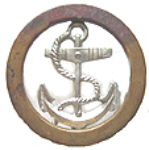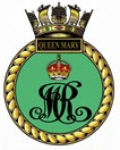




No.SS/2307, Able Seaman, Robert Henry WILLIS
Aged 28

|
Robert Henry Willis was born in Hempstead on 11th April 1888 ( Saffron Walden Q2-1888 4A:536), son of Robert Henry and Mary Ann WILLIS
(née PURKISS).
1891 census...Aged 2, he was at Blagdons Farm, Hempstead with his father Robert Henry WILLIS [30] shepherd born Helions Bumpstead; his mother Mary Ann [29]; sisters Annie E [8], Emma E [5] and Mary G [1 month]. All, except his father, were born in Hempstead. Living in Hundon Road,Clare, admitted to Clare Council School in October 1899 from Hemptead 1901 census...Aged 12, he was at Chilton Maple Road, Clare with his parents, sisters Mary [9] born Hempstead, and Nellie [2] born Birdbrook; brothers James [5] born Birdbrook and George [1] born Stoke by Clare. 1911 census...Aged 22, he was in the Royal Navy, on HMS Magnificent, a turret drill ship and stokers' training ship at Devonport. |

|
He enlisted in 2nd March 1908 for 5 years plus 7 on Reserve. A farm labourer, born Saffron Walden on 11th April 1889 ? he was 5 feet 4
inches ( 162.6 cm) tall, chest 34" (86.4 cm), sandy hair, blue eyes.Starting his training at HMS Pembroke, he passed though Warrior, Pembroke I and Brilliant
before becoming Able Seaman on 16th August 1908. From there he went via Pembroke I, to Magnificent and Agamemnon to Pembroke I where,
on 19th February 193 he completed his 5 years service and joined the Reserves. Mobilised on 2nd August 1914 at Pembroke he was posted to HMS Queen Mary on 25th August 1914. At the time of his death his mother's address was Hundon Road, Stoke by Clare. HMS "Queen Mary" was the last battlecruiser built for the Royal Navy before the start of the war, the only one of her class. She displaced 26,770 tons, was 214 metres long with a main armament on 4 x 2 - 13 inch guns ("A", "B", "Q" and "X" turrets (from bow to stern) and 16 x 1 -4 inch guns. She took part in the Heligoland Bight action on August 28th, 1914 and also the German raid on Scarborough in December 1914 when the German High Seas fleet managed to escape back to Germany. On 31st May 1916 the German High Seas Fleet was intercepted by the Royal Navy Grand Fleet at Jutland. The accurate German gunfire was soon effective and hits on guns turrets of "Queen Mary" apparently caused a flash back to her magazine and the following explosion split the ship in half and she sank, taking all but 20 of her 1,275 crew with her. Investigations later put it down to the fact that the ship was carrying more than the usual amount of explosives and to assist in increasing the rate of fire, safety procedures had been ignored, some scuttle of the lifts from the magazines seemingly jammed open and cordite stored in a haphazard manner in the corridors and turrets. This was also assumed to be the cause of the loss of Indefatigable and Invincible. Ships that had maintained safety regulations were seen to have absorbed more hits without sinking. Despite greater British losses in ship and men the battle was considered a British victory since the action was intended to blocked the North Sea,and after this action the German High Seas Fleet never ventured out to fight again and the blockade on shipping to Germany was maintained throughout the Great War. An official crest for HMS "Queen Mary" has not been found
photo: Commonwealth War Graves Commission click here to go to the Commonwealth War Graves Commission website for full cemetery/memorial details |